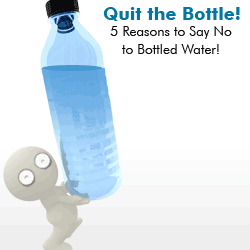
Many people consider cancer as a disease that exclusively, or almost exclusively, afflicts middle-aged or elderly people. But studies done over the past twenty years have revealed a high incidence of childhood cancer, and research has indicated that this epidemic may be due to the presence of certain contaminants in drinking water. Arsenic and radon are two substances that are being singled out as the primary culprits.
Arsenic is a poisonous element used in making insecticides. A report in 2002 by the National Center for Biotechnology Information (NCBI) stated that there had been an excess of bone cancer in children between the ages of 5 and 14, and of lymphoma in those between ages of 15 to 19 in Churchill County, Nevada, whose drinking water shows high levels of arsenic.
Radon is a radioactive noble gas present in bedrock; it can seep from the ground into houses through cracks that are not properly sealed, and may also be found in tap water. Although physicians use radon to treat cancer, the element itself can also be carcinogenic. A study done in North Carolina in 1991— again by the NCBI— indicates the correlation between the high childhood mortality rates from cancer and the presence of radon in the water. Scientists calculated the rates of death from cancer among children below the age of 15 from 1950-79 in counties with varying concentrations of radon. It was found that children in counties with high radon levels had the highest cancer rates.
Other contaminants to which cancer in children has been attributed include:
- fluorides— used to prevent tooth decay. A 2001 study reports that boys who drank fluoridated water had a notably higher incidence of osteosarcoma, a rare form of bone cancer, than those who did not.
- strontium-90 and other waste material from nuclear power plants— In southeastern Florida, a 32.5% rise in cancer among children under 10 accompanied a rise in Sr-90 in water and in baby teeth.
The most traumatic thing that a parent can experience is the illness or death of a child. This childhood cancer epidemic can and must be brought under control. Dirty water should be purified, new regulations need to put into place and/or existing ones must be strictly enforced. Last but not least, the burden of paying the costs of cleanup for water pollution— as for all forms of pollution— should fall on the guilty polluter, not on the hard- working taxpayer.



